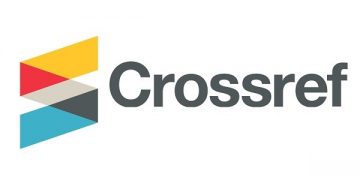Hubungan Psikolinguistik dalam Pemerolehan dan Pembelajaran Bahasa
DOI:
https://doi.org/10.61722/jssr.v3i4.5259Keywords:
Psycholinguistics, Acquisition, Language LearningAbstract
This article aims to examine the relationship between psycholinguistics in language acquisition and learning through a conceptual qualitative approach based on literature review. The discussion explores how cognitive, neurological, and affective aspects within psycholinguistics contribute to the processes of first and second language acquisition, and how these insights inform language teaching strategies in educational settings. Rather than focusing on empirical data or specific field sites, this study synthesizes and systematically analyzes findings and theoretical developments from recent scholarly literature in psycholinguistics and language education. The method employed is a theoretical content analysis of reputable academic sources. The findings highlight a strong interconnection between brain mechanisms, mental processes, and social input in the language acquisition process. Moreover, integrating theories of language acquisition and language learning strengthens pedagogical approaches that are responsive to learners’ individual needs. This article contributes conceptually to the interdisciplinary understanding among linguistics, psychology, and education, and offers a foundation for future empirical studies that may apply these theoretical insights in practical contexts.
References
Aritonang, D. R., & Dewi, S. N. (2022). Hubungan Psikolinguistik Terhadap Pemerolehan Dan Pembelajaran Bahasa Anak. Jurnal Penelitian Pendidikan Bahasa Dan Sastra, 7(1), 64–70. https://doi.org/10.32696/jp2bs.v7i1.1204
Cahyani, F., Yuliana, B. D., & Fatmawati. (2025). Hubungan Psikolinguistik Dalam Proses Pembelajaran Bahasa Terhadap Anak Austisme. 9(1), 65–75.
Desi, D. R. Z., Dania, I., & Maksudin. (2023). Pembelajaran Bahasa Arab Berbasis Pendekatan Psikolinguistik Implikasi Dan Implementasinya. Jurnal Ihtimam, 6(1), 34–46. https://doi.org/10.36668/jih.v6i1.449
Fatmaira, Z., Pasaribu, T., & Habibi, R. (2024). Pemerolehan Bahasa Pada Anak Tingkat Dasar (Kajian Psikolinguistik). Warta Dharmawangsa, 18(3), 1039–1049. https://doi.org/10.46576/wdw.v18i3.4770
Halid, E. (2025). Pemerolehan Bahasa Anak Usia 4 Tahun dalam Kajian Morfologi. PENA LITERASI: Jurnal Pendidikan Bahasa Dan Sastra Indonesia, 1(3), 97–111. https://doi.org/10.59246/alfihris.v1i3.297
Knell, G., & Struys, E. (n.d.). Stand-out : A Systematic Review of the Role of Salience in Second Language Acquisition. 9(2025), 1–18. https://doi.org/10.22599/jesla.131
Kusuma, A. B. (2018). Pemerolehan Bahasa Pertama Sebagai Dasar Pembelajaran Bahasa Kedua (Kajian Psikolinguistik). Al-Manar, 5(2). https://doi.org/10.36668/jal.v5i2.10
Muradi, A. (2013). Tujuan Pembelajaran Bahasa ASing (Arab) di Indonesia. Al-Maqoyis, 1(1), 140–149.
Muslimat, N. H., Gustina, R., Khairunnisa, L., & Antonietta, J. R. (2023). Hubungan Psikolinguistik Dalam Proses Pembelajaran Bahasa Terhadap Perkembangan Anak. Journal Of Gender Equality And Social Inclusion (Gesi), 35(1).
Nasution, S., Asari, H., Al-Rasyid, H., Faridah, F., Zulpina, Z., & Rangkuti, R. U. (2025). Arabic Learning and Religious Identity among Non-Muslim Students in Indonesia. Jurnal Ilmiah Peuradeun, 13(2), 1497–1526. https://doi.org/10.26811/peuradeun.v13i2.2053
Nurhamidah, D., Rafli, Z., Murtadho, F., & Mahfuzo, M. R. (2024). Psycholinguistic Insights Into Interaction Patterns For Meaning Acquisition In Bipa Learning At The University Level Didah. 11(2), 197–210.
Tae, M. F., Ximenes, L., Talelu, O., Niis, S., Abuk, Y., & Sako, Y. (2025). Hubungan Psikolinguistik dalam Pemerolehan dan Pembelajaran Bahasa. Jurnal Kajian Dan Penelitian Umum, 3(1), 307–317.
Yu, Y. (2022). The role of psycholinguistics for language learning in teaching based on formulaic sequence use and oral fluency. Frontiers in Psychology, 13(September), 1–19. https://doi.org/10.3389/fpsyg.2022.1012225
Downloads
Published
Issue
Section
License
Copyright (c) 2025 JOURNAL SAINS STUDENT RESEARCH

This work is licensed under a Creative Commons Attribution-ShareAlike 4.0 International License.













